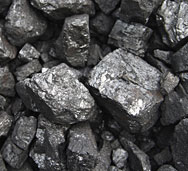Coal Scuttle
Formerly known as the Gardener’s Basket
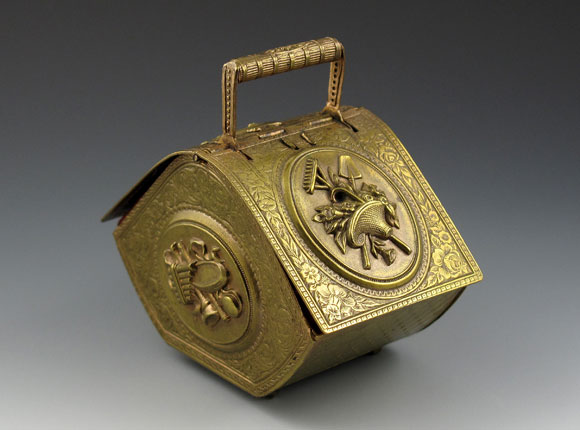
Needle Case
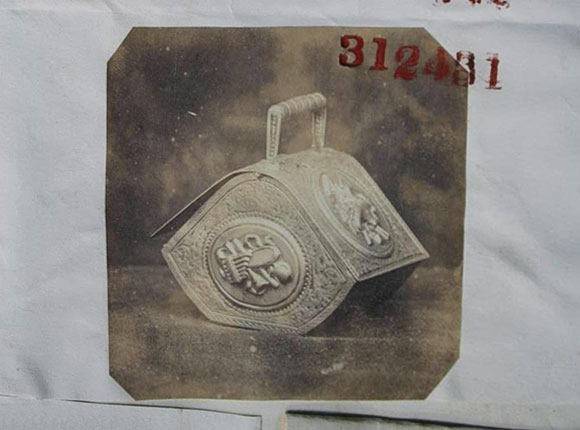
Design Representation
NOTE: The reason the name of this needle case was changed is because an artlce from July 1878 was recent discovered which describes this item as
a coal scuttle.
Design Details
Needle Case Type: |
Figural |
Patent/Registered to: |
W. Avery & Son - Redditch |
Patent/Design Representation #: |
Ornamental Class1: Metal: #312431 |
Patent/Design Registration Date: |
August 1, 1877 |
Location of Patent/Design Registration: |
The National Archives (TNA) - Kew, UK |
Reference #: |
TNA Representation - BT 43/42/312431
TNA Register - BT 44/4/312431 |
Dimensions: |
6 x 3.6 x 5.2 |
Material: |
Brass |
Name Variations: |
a) W. Avery & Son - Redditch
b) C. G. Wacker & Co - Redditch |
Other Variations: |
a) Nickel-silver version (the sole source of this information is Horowitz and Mann as no example of this needle case
in nickel-silver has been seen by the authors of this website)
b) Slightly different Avery signature stamp on the bottom |
Additional Photographs
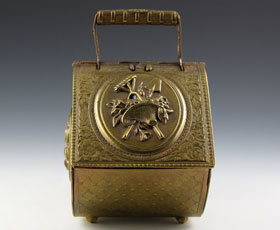
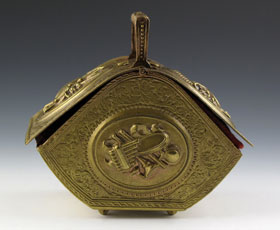
Front and side views
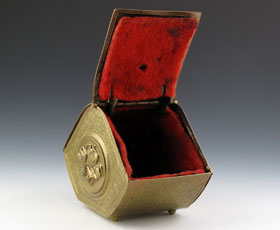
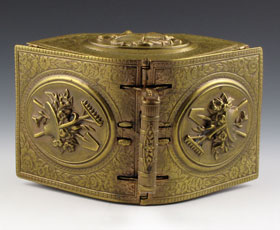
Top open and closed
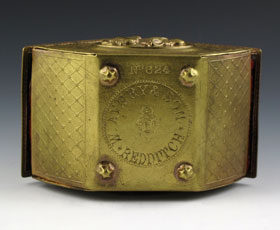
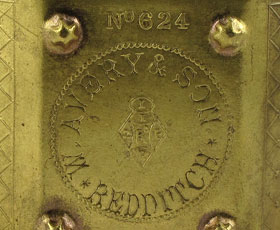
Bottom and signature detail
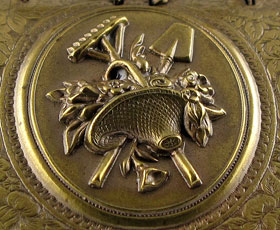
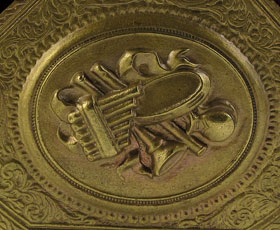
Top and side details
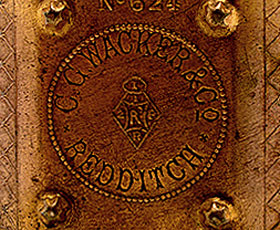
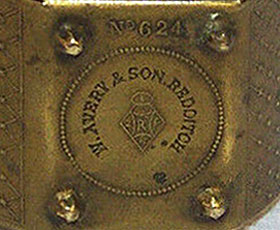
Wacker signature detail and a slightly different Avery signature detail (photographs from the Internet).
Facts
A coal scuttle is a metal container that holds a small supply of coal for use with an indoor stove or heater. This type of receptacle, also
called a coal hod, coal vase or coal bucket, typically has either a sloping or slanted top allowing the coal to be poured onto the fire more
easily. Some also contain a small scoop for that purpose. Today coal scuttles are used primarily for decorative purposes since most
homes are heated with gas or electricity.
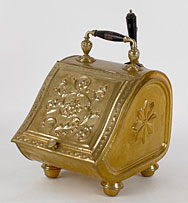
History
During the Victorian Period most homes used coal as the main energy source for both heating and cooking making it necessary to have a small
supply handy. While earlier vessels for holding coal were often plain and bulky, Victorian ones became highly decorative. The Victorians
were also responsible for enacting laws to protect workers since coal mining was a dangerous business. For example in 1842 the Mines Act
forbade the mining industry from employing anyone under the age of 10 in an underground mine. Later the 1850 Coal Mine Inspection Act and the
1870 Coal Mines Regulating Act established additional safety standards.
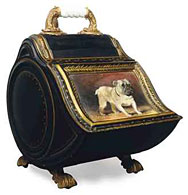
Miscellaneous
Coal is a hard, black rock composed of carbonized plant matter found in underground deposits. Although it’s been around as a heating fuel
since the days of the cave man, it wasn’t until the Industrial Revolution in the 18th and 19th centuries that it became the world’s leading fossil
fuel. Although coal usage has decreased in recent years due to the dangers of coal mining and the negative impact of carbon dioxide emissions
on the environment, coal is still the largest energy source for the production of electricity worldwide.
